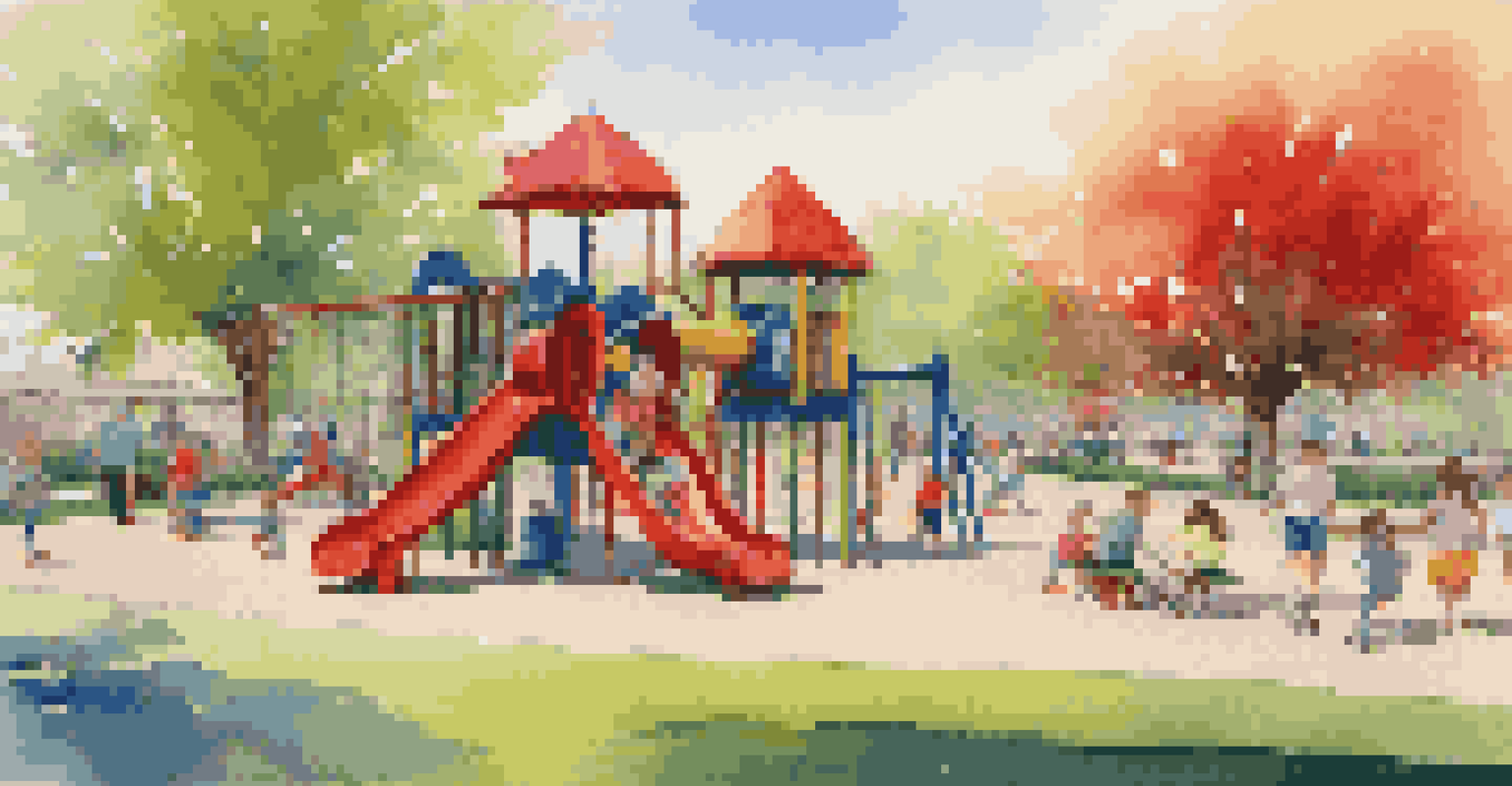Travel Safety Tips for Families with Infants and Toddlers

Plan Ahead: Choose Family-Friendly Destinations
When traveling with infants and toddlers, selecting the right destination is crucial. Look for places that offer amenities such as child-friendly hotels, parks, and attractions tailored for young kids. This not only makes your trip more enjoyable but also reduces potential stressors during your stay.
Traveling with kids is not just about getting from point A to point B; it's about creating memories that will last a lifetime.
Researching family-friendly activities can help you create a balanced itinerary that includes downtime for your little ones. For example, beaches with shallow areas or parks with playgrounds can provide safe spaces for kids to play while you relax nearby. This way, you can keep your travel schedule flexible and fun.
Lastly, consider the travel logistics, such as the availability of baby supplies and healthcare facilities. Knowing that you can easily access diapers or a pediatrician in case of an emergency can give you peace of mind, making your journey smoother.
Pack Smart: Essentials for Young Travelers
Packing wisely is key to ensuring a smooth trip with infants and toddlers. Start by creating a checklist of essentials, including diapers, wipes, snacks, and a favorite toy or blanket for comfort. This will help you avoid last-minute stress and ensure your little one feels secure in unfamiliar surroundings.

Consider investing in travel-sized products that save space without sacrificing quality. For instance, compact diaper bags or portable high chairs can make a big difference. Additionally, packing a first-aid kit with child-friendly medications can prepare you for minor mishaps, ensuring you’re ready for any surprises.
Choose Family-Friendly Destinations
Selecting destinations with child-friendly amenities ensures a more enjoyable and less stressful trip.
Finally, think about the convenience of your luggage. A lightweight stroller that folds easily can be a lifesaver in airports or crowded places. This allows you to navigate through busy terminals while keeping your child safe and comfortable.
Safety First: Childproofing Your Travel Space
Once you arrive at your destination, it's important to childproof your accommodations. Check for potential hazards like sharp corners, exposed electrical outlets, or small items that could pose a choking risk. Taking a few minutes to assess the space can prevent accidents before they happen.
The journey of a thousand miles begins with a single step, but traveling with children requires a few extra steps and a lot of patience.
If you're staying in a rental or hotel, request items like cribs or bed rails in advance. Many places offer these for families, ensuring your child has a safe sleeping environment. This added precaution can help you relax and enjoy your trip knowing your little one is secure.
Don’t forget to bring along safety gear such as outlet covers or a portable baby gate. These items can provide additional protection in unfamiliar spaces, giving you peace of mind while exploring new surroundings.
Traveling by Air: Tips for a Smooth Flight
Air travel can be daunting with young children, but planning ahead can ease the experience. Arrive at the airport early to allow ample time for check-in and security. This way, you won't feel rushed and can handle any unexpected delays more calmly.
Pack a bag with snacks, toys, and electronic devices to keep your child entertained during the flight. Consider downloading their favorite shows or games beforehand, as this can be a great distraction. Engaging your little one can make the flight feel shorter and more enjoyable for both of you.
Pack Smart for Young Travelers
Creating a checklist of essentials and investing in space-saving travel products can make your journey smoother.
Lastly, remember to take advantage of family boarding options if available. This allows you to settle in without the pressure of a long line. Plus, you can get your child comfortable and ready for takeoff while avoiding the stress of others waiting behind you.
Car Travel: Ensuring Safety on the Road
When taking a road trip with your family, safety is paramount. Make sure your car seat is properly installed according to the manufacturer's guidelines. Regularly check the seat's harness system to ensure it fits snugly, providing the best protection for your child.
Plan for frequent breaks during long drives to let your little ones stretch their legs and burn off some energy. Stopping at parks or rest areas can turn monotonous travel into an adventure. These breaks can significantly improve everyone's mood and comfort during the journey.
Additionally, pack a travel kit with entertainment options and snacks. This can help keep your child engaged and minimize the likelihood of meltdowns. Simple activities like coloring books or travel-friendly games can make the drive more enjoyable for everyone.
Health Precautions: Keeping Kids Safe and Healthy
Traveling exposes kids to new environments, so it's essential to prioritize their health. Before your trip, consult your pediatrician about any necessary vaccinations or medications, especially if you're traveling internationally. Having this knowledge can help you avoid health risks while abroad.
Pack a basic health kit that includes fever reducers, antihistamines, and any regular medications your child takes. This ensures you're prepared for common ailments like allergies or fevers that may arise during your travels. Being proactive can save you from unexpected trips to a pharmacy in an unfamiliar location.
Prepare for Emergencies While Traveling
Having a clear emergency plan and teaching your child basic safety information can provide peace of mind during your travels.
Also, encourage good hygiene habits like handwashing, especially before meals or after playing in public spaces. This simple practice can significantly reduce the risk of illness, allowing your family to make the most of your vacation.
Emergency Preparedness: Have a Plan in Place
No one wants to think about emergencies while traveling, but it's better to be prepared. Create a plan that outlines what to do in case of a medical emergency or if you get separated from your child. Familiarize yourself with the local emergency numbers and nearby hospitals at your destination.
In addition to having a plan, ensure your child knows basic safety information, like how to identify a trusted adult. Teaching them to recognize emergency services personnel can empower them to seek help if needed. This can be especially beneficial in crowded places where it's easy to get separated.

Lastly, consider carrying a photo of your child in case you need to show it to someone while looking for them. This can expedite the process and help others assist you in locating your child more quickly.